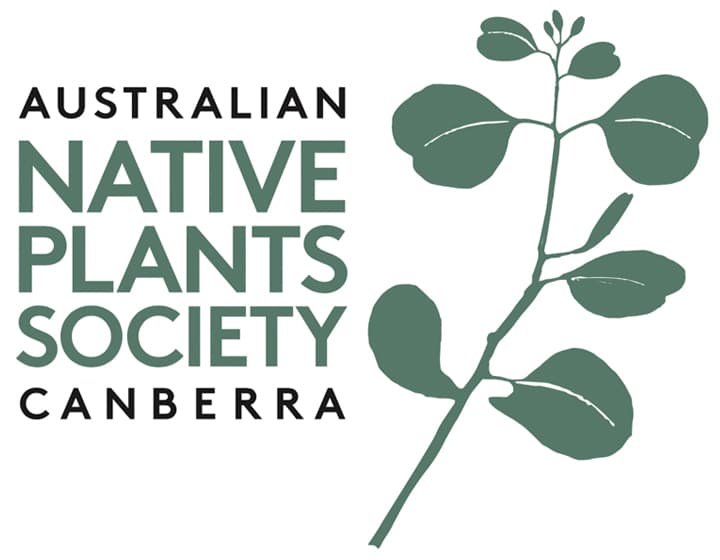The Kennedy Garden at the National Museum of Australia
By Lyndal Thorburn
March 2023

In June 2022 our family visited the National Museum of Australia (NMA). I hadn’t been there for a couple of years and was surprised at how much the new garden at the front of the building, first opened in 2019, had grown. This garden is formally called the Christina and Trevor Kennedy Garden (the Kennedy Garden), and it was commissioned in 2018. It contains plants which, according to the Museum, are from across Australia. However, on closer inspection it can be seen that most are native to the east coast (broadly speaking) and there seems to be only one species that is solely from Western Australia. Hence, the species chosen are likely to grow well in Canberra.
Plants in the collection include:
• Ajuga australis — a purple-flowered groundcover from eastern Australia
• Acacia cultriformis — a golden wattle from NSW
• Acacia pravissima ‘Bushwalk Baby’ — a groundcover form of this ball-flowered wattle. Its wild form grows in southern NSW and Victoria. The small form is recommended for tubs, as a ground cover or spilling over retaining walls.
• Allocasuarina verticillata — a small tree occurring in NSW/ACT, SA, Tas, and Vic.
• Eucalyptus rossii — a scribbly gum from the NSW tablelands • Banksia blechnifolia — a Western Australian ground-hugging banksia
• Banksia integrifolia ‘Roller Coaster’ — a tough, groundcover and cascading form of B. integrifolia which itself is native to the east coast of Australia
• Banksia spinulosa — a large-flowered banksia from coastal NSW and Queensland. The museum has planted a cultivar called ‘Coastal Cushion’, a low-growing form which gets no higher than 0.8m and as wide as 0.5m
• Callistemon (formerly Melaleuca) subulatus — a red-flowering bottlebrush from eastern NSW. The museum has planted a low form called ‘Brogo Overflow’ which grows up to 1.5m
• Dodonaea procumbens — a hopbush with red fruit from NSW, Vic and SA
• Eucalyptus pulverulenta — a small mallee eucalypt with cream flowers from NSW
• Grevillea lanigera — a red-flowering groundcover grevillea from NSW and the ACT. The museum grows the Mount Tamboritha cultivar which, despite its name, originated from Wilson’s Promontory, Vic
• Hakea myrtoides x H. petiolaris ‘Burrendong Beauty’ — a low cultivar of two WA species which emerged at Burrendong Arboretum
• Hardenbergia violacea ‘Mini Ha Ha’ — a shrubby form of the common purple pea climber, found in the eastern States (including the ACT)
• Indigofera australis — pink pea that is found in south-eastern and southwestern Australia (including the ACT)
• Leptospermum polygalifolium ‘Copper Glow’ — a form of this hardy east coast ti tree with coppery tips on new growth. It grows to the same size as the wild form — 3mH x 2mW
• Lomandra confertifolia — a Queensland native mat rush which grows more slowly than our local L. longifolia • Pimelea nivea — this is a small shrub with white flowers that is endemic to Tasmania
• Philotheca myoporoides ‘Flower Girl’ — a smaller, pink-flowered form of this south-eastern Australian native


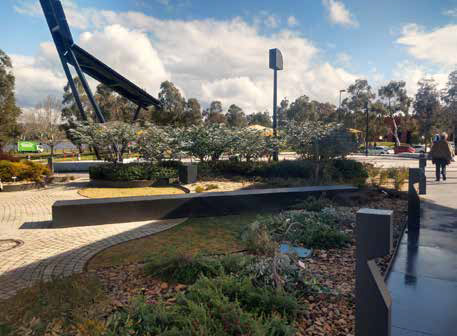
The gardens are well worth a visit, with a series of raised beds adding visual variety and improving drainage. I am interested to see what happens when the E. rossii reach their full height, as they will reduce the sun to many of the beds.
I took most of these photos in June but went back in September to check on names — many more species were in flower then. While spring is clearly the best time to visit, the museum offers guided tours of the gardens throughout the year. These tours also provide information on Aboriginal uses of many of these plants (something for the Daytime Activities Group, perhaps?). Acacia pravissima ‘Bushwalk Baby’ in raised bed (foreground), Banksia blechnifolia next to the path and, in the rear raised bed, Lomandra confertifolia. Eucalyptus rossii trees form the backdrop. The L. confertifolia, though it was looking good in September, is not recommended for Canberra* because it is less frost hardy than other species and is more likely to succumb to drought as it also has a shallow root system In the wild, it grows in the understorey of dry sclerophyll forest. The plants at the NGA have some overhead protection from infrastructure but whether they do well as we move out of this current La Nina period remains to be seen!
*Layt, T (no date) Beware of Using Lomandra confertifolia in mass planting, https://www.ozbreed.com.au/download/ landscapenews08_10/confertifolia.html)

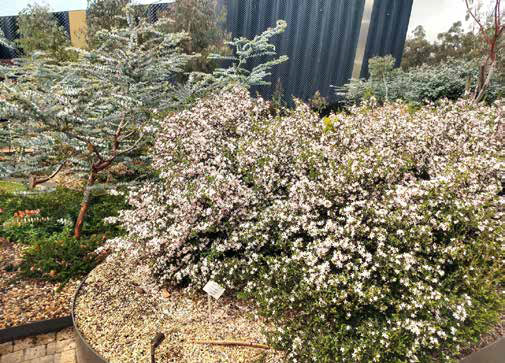

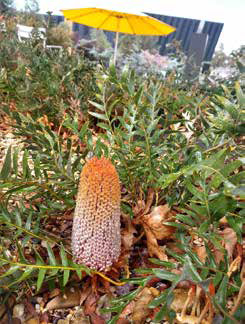
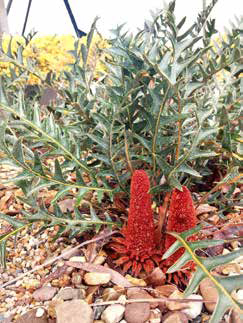
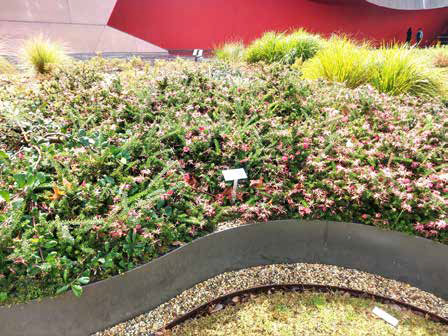
Back to Articles List
